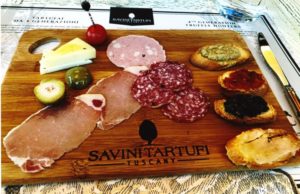Tuscan Truffle Hunting
go.ncsu.edu/readext?620168
en Español / em Português
El inglés es el idioma de control de esta página. En la medida en que haya algún conflicto entre la traducción al inglés y la traducción, el inglés prevalece.
Al hacer clic en el enlace de traducción se activa un servicio de traducción gratuito para convertir la página al español. Al igual que con cualquier traducción por Internet, la conversión no es sensible al contexto y puede que no traduzca el texto en su significado original. NC State Extension no garantiza la exactitud del texto traducido. Por favor, tenga en cuenta que algunas aplicaciones y/o servicios pueden no funcionar como se espera cuando se traducen.
Português
Inglês é o idioma de controle desta página. Na medida que haja algum conflito entre o texto original em Inglês e a tradução, o Inglês prevalece.
Ao clicar no link de tradução, um serviço gratuito de tradução será ativado para converter a página para o Português. Como em qualquer tradução pela internet, a conversão não é sensivel ao contexto e pode não ocorrer a tradução para o significado orginal. O serviço de Extensão da Carolina do Norte (NC State Extension) não garante a exatidão do texto traduzido. Por favor, observe que algumas funções ou serviços podem não funcionar como esperado após a tradução.
English
English is the controlling language of this page. To the extent there is any conflict between the English text and the translation, English controls.
Clicking on the translation link activates a free translation service to convert the page to Spanish. As with any Internet translation, the conversion is not context-sensitive and may not translate the text to its original meaning. NC State Extension does not guarantee the accuracy of the translated text. Please note that some applications and/or services may not function as expected when translated.
Collapse ▲
Sandra Rosy Lotti owner of the Toscana Saporita Cooking School in Tuscany visiting Savini Tartufi, Italy. Shown with Savini family member and one of their truffle dogs.
My husband and I were fortunate to travel to Italy in late April. We enrolled in Tuscana Saporita Cooking School near Lucca. After spending the morning of April 30 learning the basics of gnocchi, pizza dough, and fruit tarts, our nine-member class traveled to Savini Tartufi. The fourth generation Savini family sources truffles in the nearby woods and produces a wide range of truffle products. Our introduction to the truffle hunt began with the Italian truffle hunting dog. Their training begins at birth of each puppy destined for truffle hunting.
Immediately upon birth, a truffle puppy is introduced to the truffle fragrance by the rubbing of a fresh truffle on the mother’s stomach. As the puppies suckle their mother, they make their first connection to the truffle odor with their mother’s milk. This process continues daily while the puppies nurse.
When the puppies begin to wean from their mother’s milk and venture from her side, a plastic ball is rubbed with a truffle. The ball is taken a short distance from the puppies and placed out of sight in the grass. When the puppies excitedly find the ball, the trainer offers each a small kibble as a reward. This process continues with the trainer placing the ball further and further away from the puppies. Each successful search for the ball is rewarded with a kibble.
Now the time has arrived to bury the ball, similar to what happens when a truffle develops underground. The ball is now sliced open, and a piece of truffle is placed inside the ball. With no visual cue on the surface of the ground, the puppies sniff the field until finding the truffle odor emanating from below the surface. The puppies are encouraged to get the ball which results in digging. When the puppies find the truffle ball underground, they guard it until their trainer gives them a treat. Never once has the trainer introduced truffle eating to the dog. Rather, the dog has associated the truffle discovery with something it really wants: its mother’s milk, a kibble, and now a more sizable treat. The puppies never ingest the truffle.
All throughout training, the puppies are watched. The dogs with the most passion for truffle hunting will command the highest prices. We were not told the price of the dog for this afternoon’s truffle hunt. When someone in our group was bold enough to ask, the owner replied, “A lot of Euros.”

Sandra Rosy Lotti with Savini family member on tour in nearby woods during a truffle hunt.
After a short walk into the woods near Savini Tartufi, the dog was released from his leash. Immediately, he left the path and darted into the woods as we followed along. The dog’s trainer kept his eyes zeroed in on his dog, and he walked briskly to stay on the hunt. Almost immediately, the dog began digging. When the dog found a truffle, he kept his snout in the hole so no one could steal his truffle. Once the trainer pulled a treat from his pocket, the dog forgot about the truffle and devoured his snack.
And so, this went on for quite some time. Since it was the end of April, the Scorzone truffle was in season. This truffle can vary in size from a hazelnut to a hen’s egg. It smelled musty with a dark interior. There are six varieties of seasonal truffles harvested in Tuscany, and their aromas and values vary. All truffles command a high price, but the most prized truffle is found in winter. It is the Tartufo Bianco Pregiato or the precious white truffle.

Charcuterie board with truffle infused food from Savini Tartufi.
After truffle hunting, we returned to Savini Tartufi for a delicious afternoon treat with truffle-infused items. Buon Appetito!
Written by Linda Jendro, Extension Master Gardener Volunteer.




